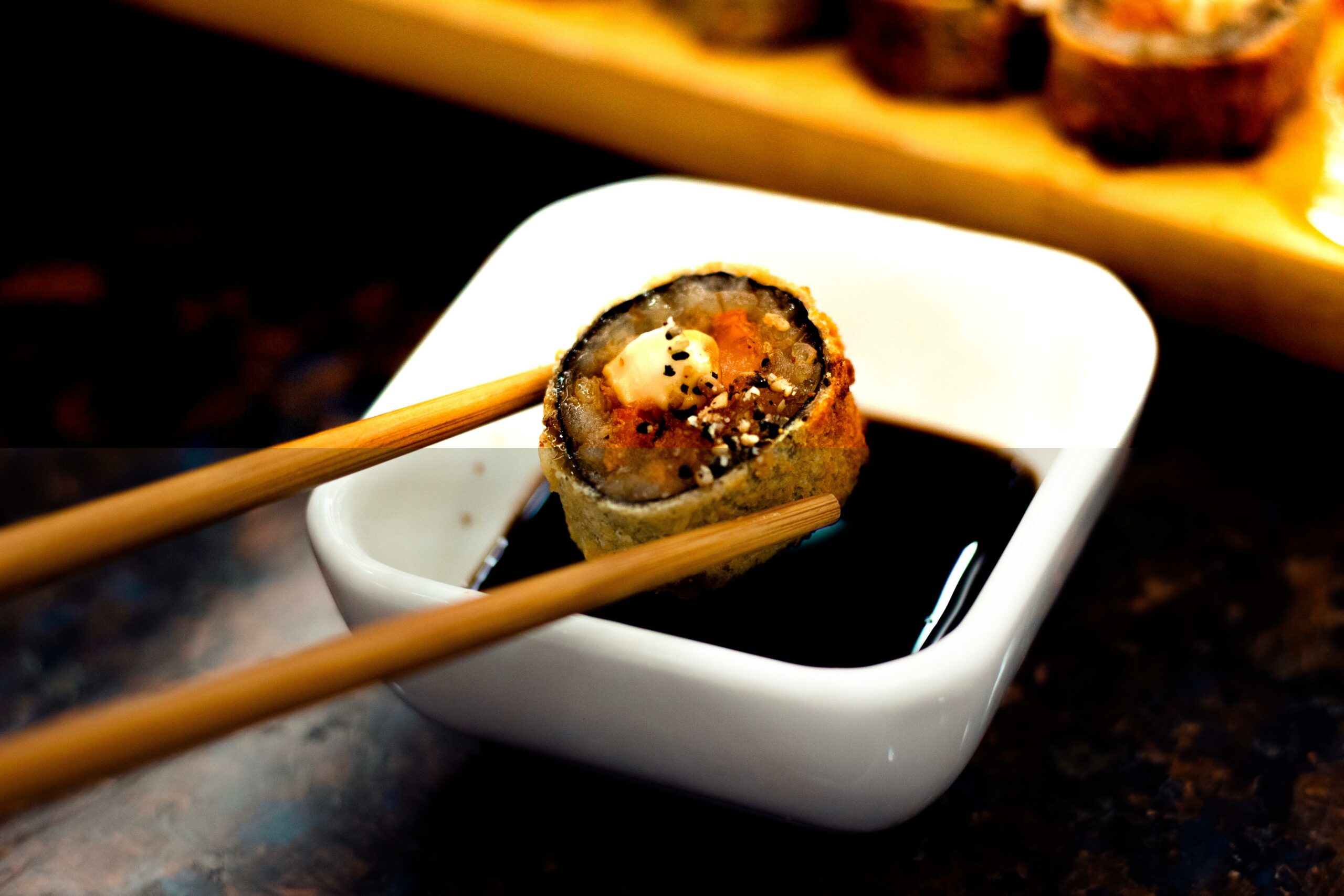Step into the world of sushi and prepare to be tantalized by its history, one that is filled with a multitude of intriguing facets. As a seasoned culinary journalist and avid explorer of cultural cuisine, I invite you on an enchanting journey, unravelling the captivating evolution of sushi. From its humble beginnings as a street food delight to its status as an internationally beloved dish, we will delve into the depths of its origins, innovations, and cultural significance. Get ready to discover a fusion of tradition and innovation that has shaped sushi into the culinary icon it is today. Join me as we unearth the hidden gems of sushi’s past and present, indulging in the rich tapestry of its history like never before.
Intriguing Facets of Sushi History
Sushi, a beloved Japanese dish, has a rich and fascinating history that spans centuries and continents. Uncovering the intriguing facets of sushi history not only reveals the dish’s origins but also sheds light on its cultural significance and the innovative techniques that have shaped it into the culinary delight we know today. Join me on this journey as we unravel the captivating story behind sushi.
From China to Japan: The Neolithic Origins of Sushi
Contrary to popular belief, sushi did not originate in Japan. Its roots can be traced back to ancient China during the Neolithic period. Back then, fish preservation was a common practice, developing into a method known as narezushi. This early form of sushi involved fermenting fish with rice and salt, resulting in a tangy and pungent flavor. As this preservation technique made its way to Japan, sushi gradually evolved into the dish we recognize today.
“Sushi’s origins lie in ancient China, where the innovative method of fish preservation paved the way for its future transformation into a culinary delicacy.”
Tokyo: The Birthplace of Traditional Sushi
While sushi may have originated outside of Japan, it was in Tokyo that the foundations of traditional sushi were laid. In the early 19th century, a Tokyo-based street food stall called Hanaya Yohei revolutionized sushi by inventing nigiri sushi. This style of sushi involved topping bite-sized portions of vinegared rice with fresh slices of fish, creating a harmonious combination of textures and flavors. Yohei’s innovation laid the groundwork for what would become the cornerstone of sushi as we know it.
“Tokyo, with its vibrant street food scene, played a pivotal role in the evolution of sushi, giving birth to the iconic nigiri sushi that we enjoy today.”
From Trash to Treasure: The Redemption of Sushi Rice
Surprisingly, the rice that forms the foundation of sushi was not always considered a valuable ingredient. In fact, it was initially deemed unfit for human consumption and used as food for birds. However, a major breakthrough occurred when a seasoning blend called “Neta Mata” was invented. This mixture of vinegar, salt, and kombu (a type of kelp) transformed the previously disregarded rice into a delectable and integral component of sushi.
“Once considered unfit for consumption, sushi rice underwent a true redemption story, evolving from bird food into a crucial and delicious element of sushi.”
The Pungent Delicacy: Stinky Sushi in Japan
As we explore the intriguing facets of sushi history, we encounter a unique variation of the dish: narezushi, the oldest type of sushi in Japan and quite possibly the stinkiest. Narezushi involves fermenting fish for several months or even years, resulting in a strong odor that has been described as a mix of cheese and pungent aroma. This type of sushi remains a delicacy in certain regions of Japan, showcasing the diversity and complexity of sushi throughout its history.
“Narezushi, with its intense aroma and rich flavor, provides a glimpse into the depth and diversity of sushi’s historical roots in Japan.”
Spreading Like Tidal Waves: Sushi and the Great Kanto Earthquake
The Great Kanto earthquake of 1923 devastated Tokyo and had a profound impact on the popularity and spread of sushi throughout Japan. As the city rebuilt, many sushi chefs and restaurants relocated to other regions, taking their skills and culinary traditions with them. This diaspora played a vital role in disseminating sushi to different parts of the country, contributing to its status as a national dish.
“The Great Kanto earthquake not only reshaped the physical landscape of Tokyo but also facilitated the spread of sushi, bringing its flavors and techniques to every corner of Japan.”
From Tradition to Convenience: The Origins of Plastic Grass in Takeout Sushi
If you’ve ever had takeout sushi, you may have noticed the vibrant green plastic grass nestled between the sushi rolls. This seemingly decorative touch actually has historical roots. In the past, sushi was typically served on wooden boards or bamboo leaves. However, as sushi became more accessible for takeaway, modern packaging replaced these traditional materials. The addition of plastic grass serves as a visual representation of sushi’s historical connection to nature.
“The green plastic grass in takeout sushi is more than just an eye-catching detail; it symbolizes sushi’s evolution from tradition to convenience while maintaining a nod to its roots.”
Through its fascinating journey across time and cultures, sushi has become a global culinary sensation. Its intriguing facets of history, from its Neolithic Chinese origins to the transformative inventions and regional influences in Japan, have shaped sushi into a beloved dish enjoyed worldwide.
As we revel in the nuances of sushi’s history, we gain a deeper appreciation for the fusion of tradition and innovation that have made sushi such a gastronomic delight. So the next time you savor a piece of nigiri sushi or enjoy the delicate flavors of maki rolls, remember the captivating story behind this iconic Japanese cuisine.
“Unlocking the intriguing facets of sushi history unveils a story of resilience, creativity, and cultural exchange, ultimately shaping sushi into the globally cherished dish it is today.”
Sushi is a delicacy loved by many, but do you know the fascinating facts about its history? If you’re curious to dive into the origins and evolution of sushi, click here to explore our curated collection of facts about sushi history. You’ll uncover the ancient roots of this culinary art form, discover how sushi has evolved over time, and learn interesting tidbits about its cultural significance. Prepare to be amazed by the rich and captivating history behind your favorite sushi rolls! So, why wait? Embark on this gastronomic adventure by clicking here: facts about sushi history.
FAQ
Question 1: Is sushi originally from Japan?
Answer 1: No, sushi can actually be traced back to the Neolithic period in China.
Question 2: Which city is traditionally associated with sushi?
Answer 2: Traditional sushi has always been associated with Tokyo.
Question 3: Who invented nigiri sushi?
Answer 3: Nigiri sushi was invented by Hanaya Yohei.
Question 4: Was sushi rice always considered important?
Answer 4: No, sushi rice was once considered trash.
Question 5: What is the oldest type of sushi in Japan?
Answer 5: The oldest type of sushi in Japan is the stinkiest sushi in the world.
Question 6: How did sushi spread throughout Japan?
Answer 6: Sushi spread throughout Japan due to the Great Kanto earthquake of 1923.
Question 7: What is the historical significance of plastic grass in takeout sushi?
Answer 7: Plastic grass in takeout sushi has historical roots.
Question 8: Does sushi have Chinese roots?
Answer 8: Yes, sushi has Chinese roots and was originally a preservation technique.
Question 9: Why did sushi become popular in Japan?
Answer 9: Sushi became popular in Japan due to an earthquake.
Question 10: How long does it take to become a sushi master?
Answer 10: It takes about 10 years to become a sushi master.
“`json
“`
- Mastering Leader in Spanish: The Complete Guide - April 19, 2025
- Uncovering Surprising Parallels: England Size Compared to US States - April 19, 2025
- Old Mexico Map: Border Shifts 1821-1857 - April 19, 2025
















